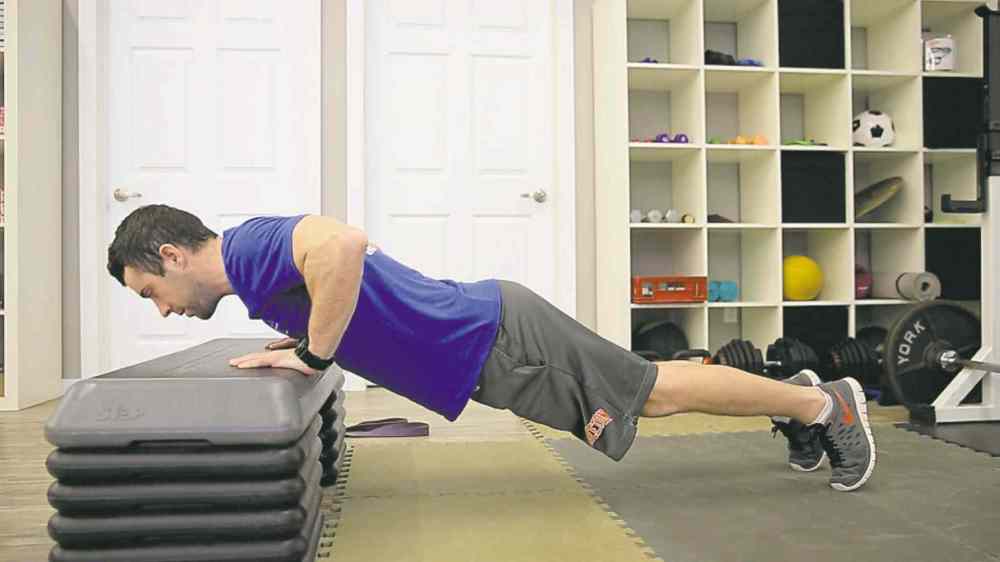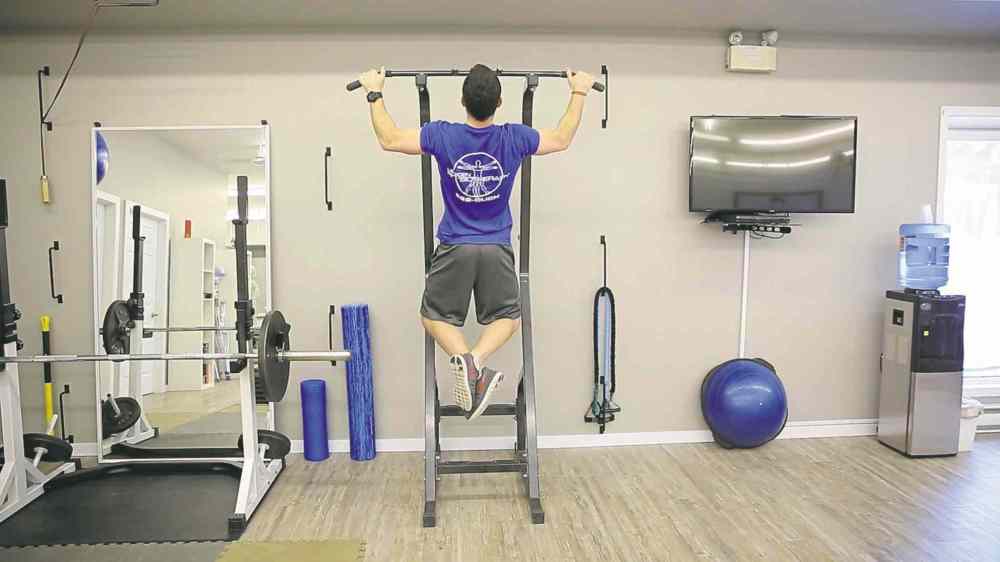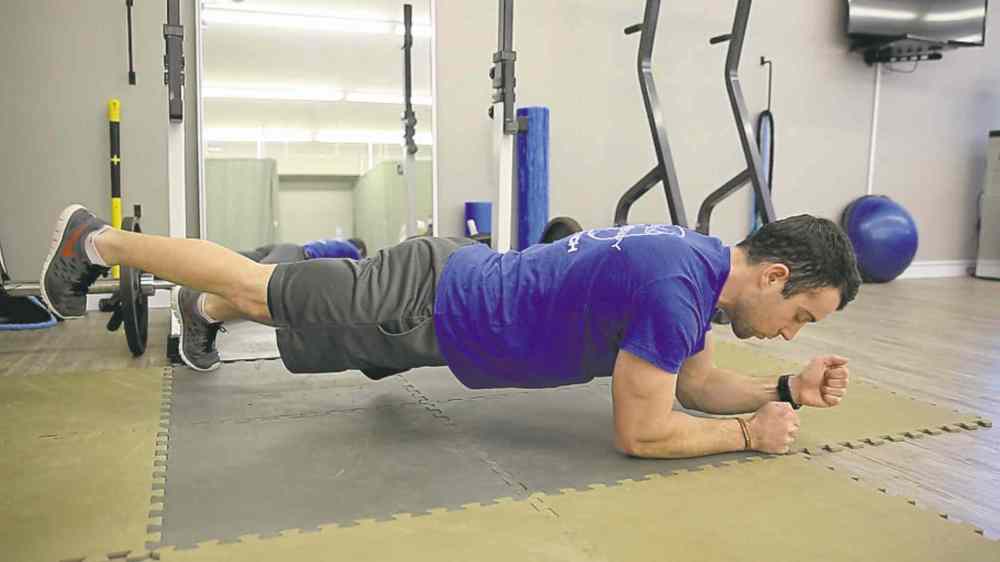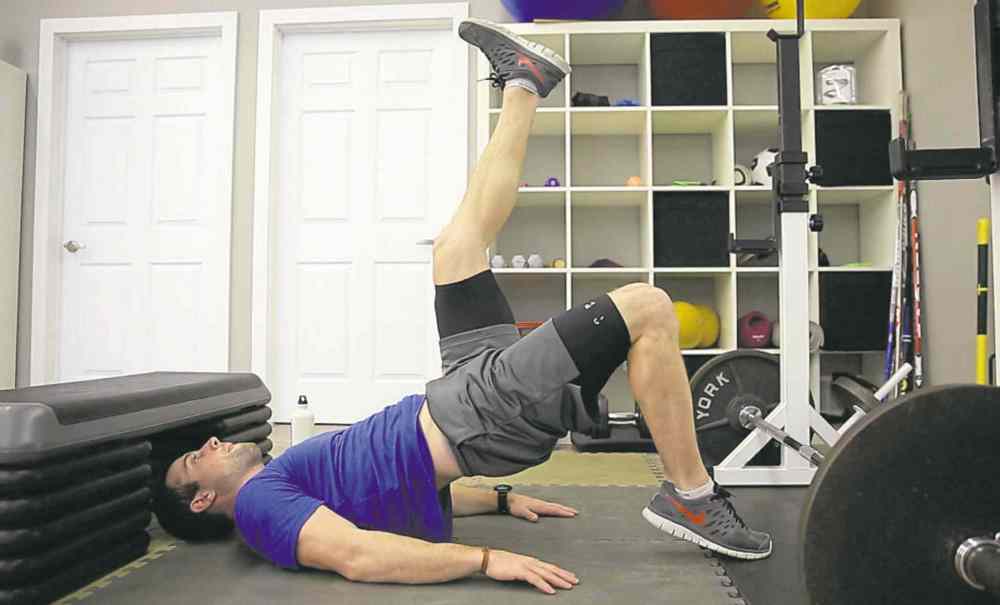Six-month total body tune-up: Challenge yourself
Advertisement
Read this article for free:
or
Already have an account? Log in here »
To continue reading, please subscribe:
Monthly Digital Subscription
$0 for the first 4 weeks*
- Enjoy unlimited reading on winnipegfreepress.com
- Read the E-Edition, our digital replica newspaper
- Access News Break, our award-winning app
- Play interactive puzzles
*No charge for 4 weeks then price increases to the regular rate of $19.00 plus GST every four weeks. Offer available to new and qualified returning subscribers only. Cancel any time.
Monthly Digital Subscription
$4.75/week*
- Enjoy unlimited reading on winnipegfreepress.com
- Read the E-Edition, our digital replica newspaper
- Access News Break, our award-winning app
- Play interactive puzzles
*Billed as $19 plus GST every four weeks. Cancel any time.
To continue reading, please subscribe:
Add Free Press access to your Brandon Sun subscription for only an additional
$1 for the first 4 weeks*
*Your next subscription payment will increase by $1.00 and you will be charged $16.99 plus GST for four weeks. After four weeks, your payment will increase to $23.99 plus GST every four weeks.
Read unlimited articles for free today:
or
Already have an account? Log in here »
Hey there, time traveller!
This article was published 14/03/2015 (3932 days ago), so information in it may no longer be current.
Winnipeg Free Press fitness columnist Tim Shantz is one-third of the way through presenting his six-month total body tune-up. Shantz, a certified athletic therapist and personal trainer at Morden Physiotherapy, has been offering exercise and training challenges every two weeks in hopes of helping readers rethink and restart healthy living.
The challenges have included cooking at home more, eliminating ‘liquid candy,’ exercising outdoors more, cranking up the intensity of some workouts and trying yoga. In addition, Shantz has been offering advice on key exercises. Here’s a recap and links to the accompanying videos.

The glute bridge
Few exercises offer the versatility of the glute bridge. It is a fantastic posterior chain exercise recruiting glute, hamstring and low back musculature, and can be transitioned easily from a simple, geriatric/rehab exercise to a butt-busting power exercise involving insane amounts of weight. As indicated in the accompanying video, varying the height of shoulder elevation relative to your hips and feet can change the amount of activation in different muscle groups, and multiple foot positions can add difficulty by reducing the amount of ground contact as well as increase firing in calf musculature. Safe implementation of this exercise can help Granny straighten out her forward stoop, or help Johnny Hockey be more powerful on the ice. For video, go to: wfp.to/glutebridge
The plank
It is too often synonymous with rigidity. We picture the spine — stiff and unyielding — as the immovable pillar of our core. While the core undoubtedly provides the basis of all movement (both upper and lower extremities), it should be viewed as a group of structures that bend and flow, while simultaneously providing a stable base for your limbs — and so should the exercise commonly referred to as planking or bridging. The plank is a great position to increase load on various muscle groups, such as the abdominals and gluteals, but while static plank holds in various positions are appropriate at first, there should always be an attempted progression toward the control of various degrees of spinal movement. For video, go to: wfp.to/planks
The push-up

It seems since the beginning of time, the push-up has been the quintessential test for upper-body strength and endurance. But it is as much about core strength and efficiency as it is about your rippling pecs. The plank and its progressions are excellent precursors to improve overall stability. In the video, we look at different ways to take a pushup from a simple, low-load exercise appropriate for beginners to a high-load movement with minimal ground contact. By changing the elevation of your hands or feet, or adding resistance with a band or adding a clap, there are infinite adaptations you can apply to make this exercise your own. For video, go to: wfp.to/pushups
The chin-up
Most people stand underneath the chin-up bar and dream of the day they are able to muscle themselves upwards so they can stare it at eye-level. Daunting — yes. Impossible — no. There are many progressions and regressions that can help you work toward your ultimate goal. Instead of starting with the “high” bar, choose an apparatus from which you can do pull-ups with your feet still grounded. From there, you can change your position to provide more resistance, or move to the high bar to perform only the negative (eccentric) part of the movement. In the case of a chin-up, that is the descending motion. Once you are able to perform one or multiple pull-ups from a narrow (easier) position, move your hands wider to increase the difficulty. If you choose an option appropriate for you, the pull-up is a great exercise to do until you can’t do any more repetitions with proper form. For video, go to: wfp.to/pullups
In all cases, consult with a certified personal trainer for more guidance or if you have additional questions.




